News & Event


News & Event
News & Event
[The 115th KISTEP Wednesday Forum] The Future and Challenges of Space R&D of Korea Reviewed Through 30 Years of Satellite R&D Programs
- Writer Yeory Lim
- Date2019-11-21
- Hit1,127
File
-
Download
 20191121133841.jpg
(154.2KB / Download 224회)
20191121133841.jpg
(154.2KB / Download 224회)
KISTEP held the 115th Wednesday Forum with the theme of ‘The Future and Challenges of Space R&D of Korea Reviewed Through 30 Years of Satellite R&D Programs’ on 20th November (Wed), 2019.
Space industry showed the power of strong countries in the past, however, the world now pays attention to it as a vital future industry. The size of worldwide market of space industry exceeded 400 billion dollars last year, and Korea also invested about 600 billion KRW to space industry in 2018. Beyond nation-led R&D, space industry is gradually expanding to private-led R&D so called ‘New Space.’ Following the trend, it is time to plan the vision of space industry, and to establish effective cooperation systems between government ministries and research institutes. Therefore the forum was prepared to diagnose the trend of New Space-led space industry and domestic space R&D status, and to seek plans for future development.
Space industry showed the power of strong countries in the past, however, the world now pays attention to it as a vital future industry. The size of worldwide market of space industry exceeded 400 billion dollars last year, and Korea also invested about 600 billion KRW to space industry in 2018. Beyond nation-led R&D, space industry is gradually expanding to private-led R&D so called ‘New Space.’ Following the trend, it is time to plan the vision of space industry, and to establish effective cooperation systems between government ministries and research institutes. Therefore the forum was prepared to diagnose the trend of New Space-led space industry and domestic space R&D status, and to seek plans for future development.
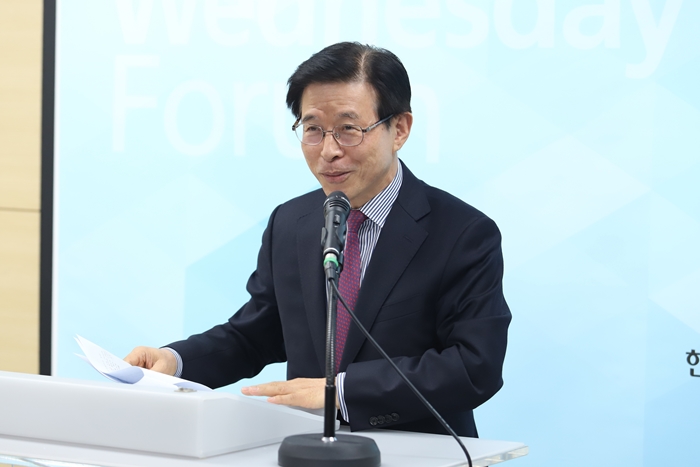
▲ Sang-seon Kim (President, KISTEP)
The forum was began with the opening address by Sang-seon Kim (President, KISTEP), and followed the presentation of Kyungin Kang (Director, Division of Space Technology, National Research Foundation of Korea), and panel discussion with Tae Soo No (Professor, Chonbuk National University), Kun-tai Park (Journalist, Donga Science), and Il Hwan Lee (Director, Center for Big Science & Energy R&D Coordination, KISTEP), and open floor discussion was followed.
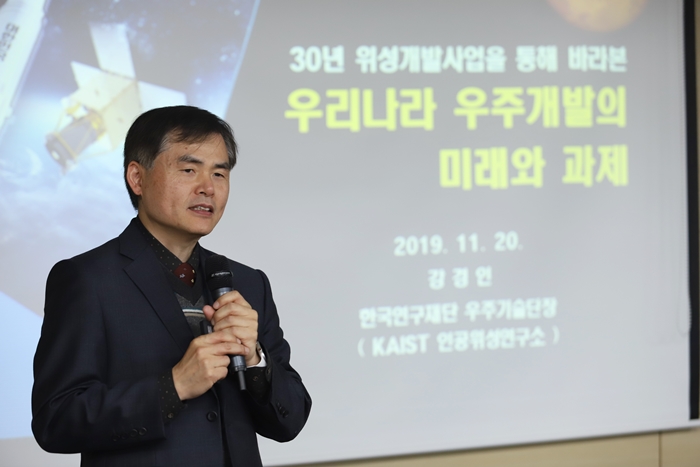
▲ Kyungin Kang (Director, Division of Space Technology, National Research Foundation of Korea)
Director Kang organized the performances of space R&D programs of Korea first. Started from the first satellite, KITSAT-1, launched in 1992 with government- and government research institutes(GRI)-centered R&D, Kore secured world-class skills for designing and assembling space launch vehicles. In 2010, a stationary satellite able to monitor for 24 hours was developed, along with the development of a remote-sensing satellite transmitting high-resolution images. Then he introduced the localization ratio of components (65% localization of spacecraft components and 41% localization of payload components) for the 6th Korea Multi Purpose Satellite (KOMPSAT) planning to be launched in 2020, and pointed the current situation that lots of components still rely on foreign countries.
He continued the presentation about the status of space R&D programs in progress in Korea and abroad. Korea is currently developing satellites which can record ultra high-resolution images for national security, multi-ministry remote-sensing satellites for public demands, and small·tiny satellites that utilize rapid-growing IT technologies in space. Then he emphasized that foreign countries already entered private-led new space era, for example a small satellite constellation, and various industries using reuse·low-price launch vehicles are participating in space industry. These private-led space industry is able to implement low-price systems as it is optimized for setting missions and goals compared to government-led programs, therefore it can ultimately establish new business models using technology applications based on demands.
Lastly, he presented challenges and improvements of space R&D programs of Korea saying that “Although Korea has increasing demands on large satellites, development of focus technology is insufficient.” He added that “Due to the gradual decrease in R&D budget and low participation of domestic industries, space industry is again in vicious cycle of relying on foreign technology.” In order to solve this, he emphasized that strengthening connections between program systems and securing fundamental technologies are important, and it is required to reorganize and expand space R&D systems to respond to gradually expanding space R&D programs.
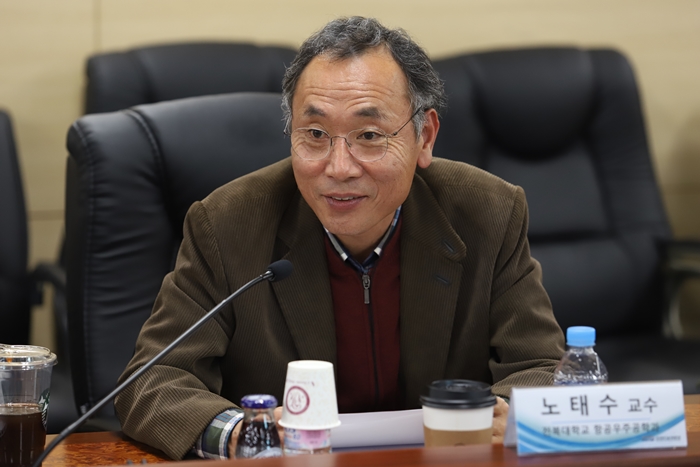
▲ Tae Soo No (Professor, Chonbuk National University)
In panel discussion, professor No asserted that “The current space R&D of Korea is stagnated in innovation and productivity. Until now, space R&D has been complacent with government-led R&D support, therefore it lost competitiveness to secure feasibility of supports compared to other issues such as climate·environment·aging.” Then he added that “Space industry should be developed in a way to help to solve problems in other industries using space R&D, rather than competing with others for government supports.” Lastly, he suggested to coordinate expert groups in industry·university·research institute by dividing their roles clearly, and to encourage small specialized research teams.
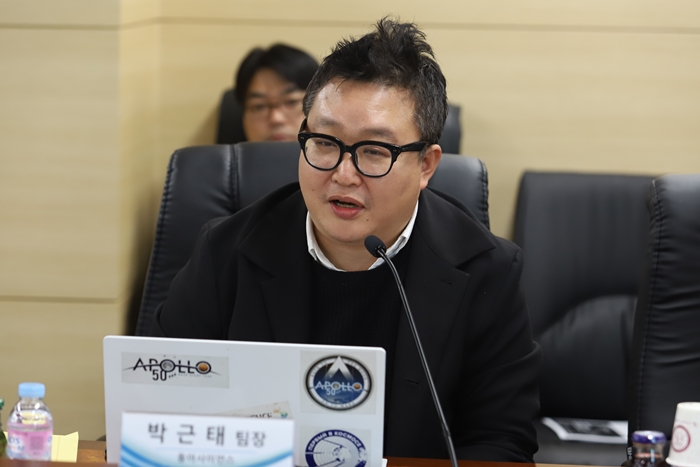
▲ Kun-tai Park (Head, Journalist team, Donga Science)
Mr. Park explained the recent space R&D issues from the media’s perspective. He clarified that “The establishment of Ministry of Space is in a stage where detailed discussion should be made, rather than an urgent process considering complex interests, and it is a misunderstanding that the new space trend was shown as ‘New space almighty’ when the local media introduced the foreign trend.” Then he added that “The purpose of Korean space R&D is not clear, and it looks like that the purpose is ‘launching’ itself rather than what we can earn by space R&D,” and pointed that “Various areas of space R&D, such as development of satellites and launch vehicles, are not connected organically.” Lastly, he suggested that it is required to seek areas that can be industrialized using results of space R&D, and to coordinate sporadic organizations related to space R&D effectively.
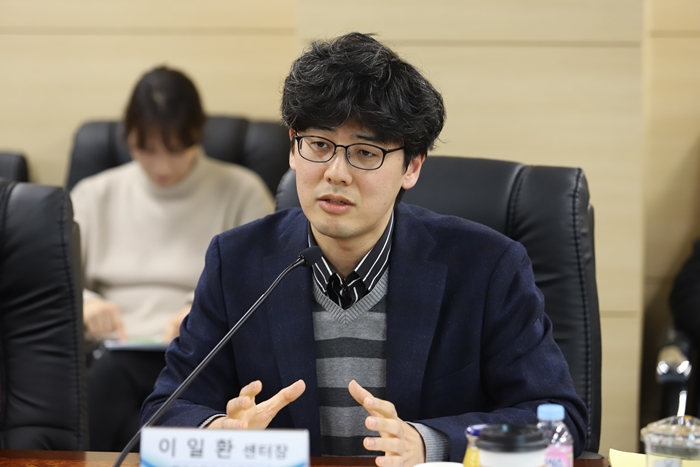
▲ Il Hwan Lee (Director, Center for Big Science & Energy R&D Coordination, KISTEP)
Director Lee claimed that “As Korean space R&D is still focused on big projects, large-scale resources are invested. Well organized plans are required in order to utilize such large-scale of resources.” He clarified that “The current superficial reason for space R&D is to meet public demands, but it is doubtful whether ‘public demands’ are properly investigated and reflected in projects.” Lastly, he emphasized that “It is necessary to grasp exact demands, but also to establish long-term investments and plans of main and responsible ministries to create optimal research environment to meet demands.”